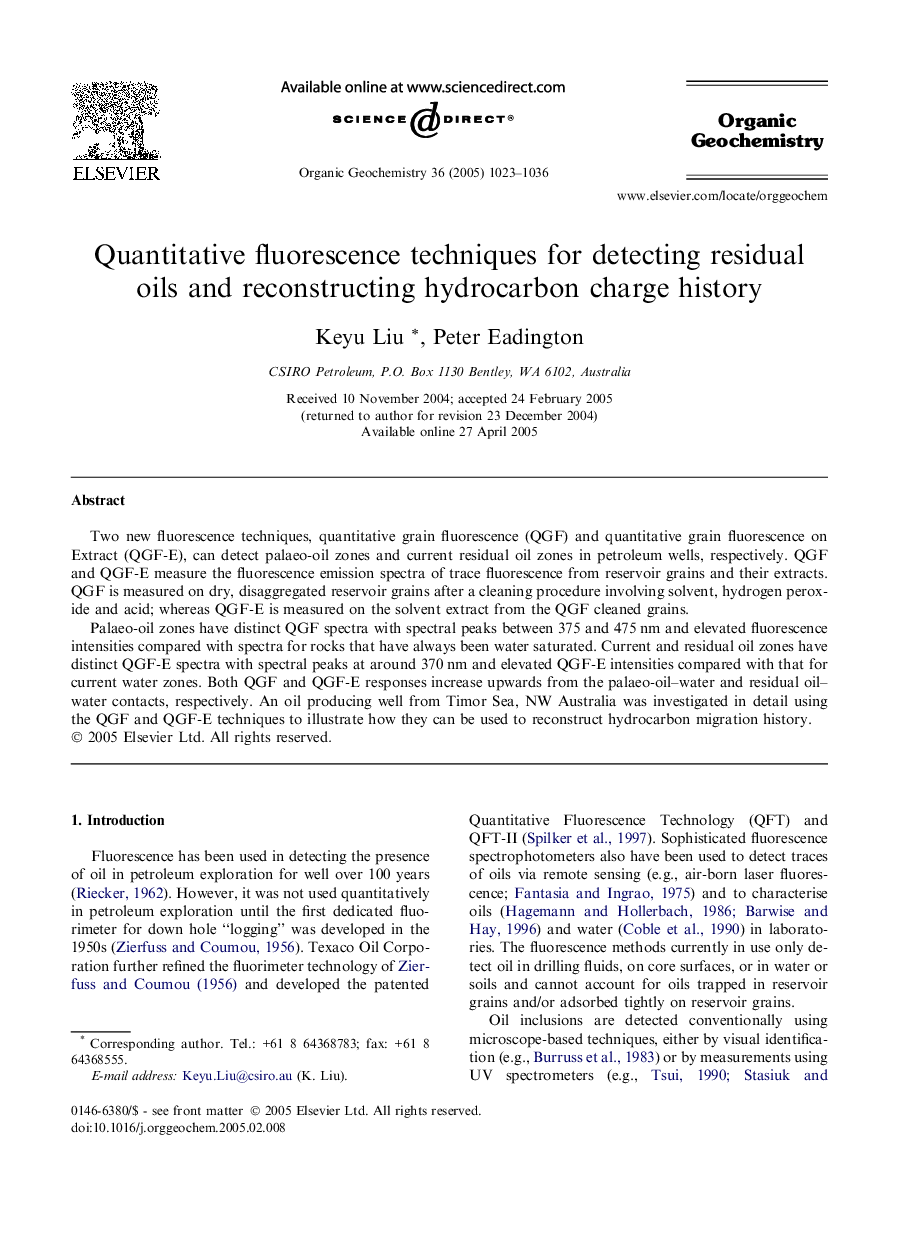| Article ID | Journal | Published Year | Pages | File Type |
|---|---|---|---|---|
| 9556792 | Organic Geochemistry | 2005 | 14 Pages |
Abstract
Palaeo-oil zones have distinct QGF spectra with spectral peaks between 375 and 475Â nm and elevated fluorescence intensities compared with spectra for rocks that have always been water saturated. Current and residual oil zones have distinct QGF-E spectra with spectral peaks at around 370Â nm and elevated QGF-E intensities compared with that for current water zones. Both QGF and QGF-E responses increase upwards from the palaeo-oil-water and residual oil-water contacts, respectively. An oil producing well from Timor Sea, NW Australia was investigated in detail using the QGF and QGF-E techniques to illustrate how they can be used to reconstruct hydrocarbon migration history.
Related Topics
Physical Sciences and Engineering
Chemistry
Organic Chemistry
Authors
Keyu Liu, Peter Eadington,
